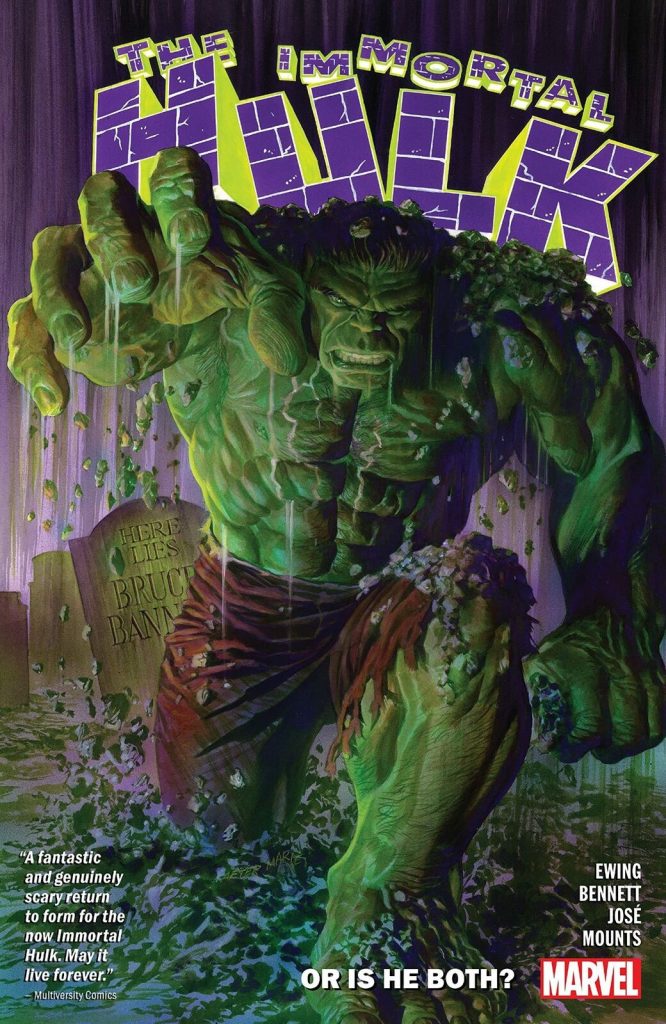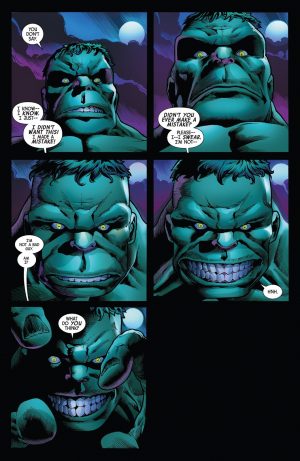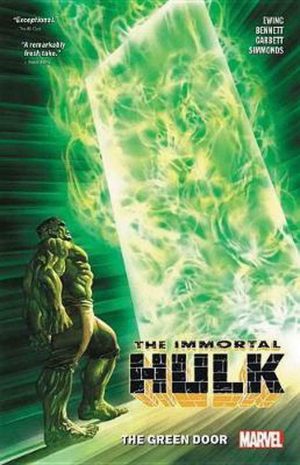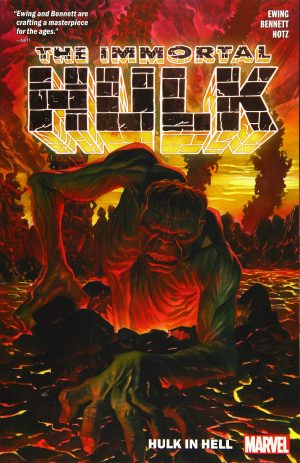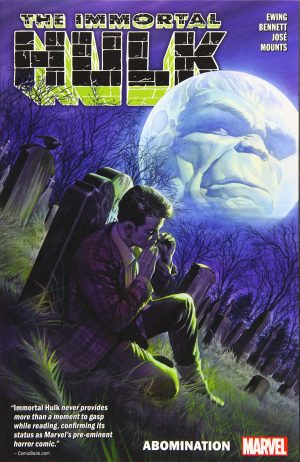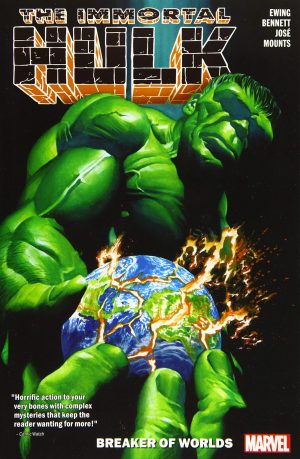Review by Frank Plowright
Despite the cliché, despite no-one believing it’s permanent, it seems an immutable rule of superhero crossovers is that someone has to die. Bruce Banner’s number came up in Civil War II. Perhaps he wasn’t an obvious choice, but there’s definitely no predictability about his return. This is the Hulk, just as we’ve rarely seen him, and for that alone Al Ewing deserves a lot of credit.
A lot more is due for his reinterpretation. As far as the world is concerned, Banner is dead and Amadeus Cho is a cuddly Hulk, so just who is that massive green monster in the opening chapter? It’s a fantastic story, a morality play beginning with a tragedy and ending with a neat parallel echoing the opening lines, while in between focusing on the problems of ordinary people, and asking what makes a bad person. Artist Joe Bennett plays his part also, only resorting to exaggeration when picturing the Hulk full figure, that a towering, looming figure of barely repressed rage, more intimidating than an armed biker gang. Otherwise Bennett keeps the people real and in surroundings we can all recognise.
Over the following episodes a wandering Bruce Banner is fleshed out, and Ewing’s vision drops into place. He’s taken the horror of the primal angry and resentful Hulk from the earliest days and mixed in the Banner of no fixed abode from the 1970s TV show, supplying a nod via the introduction of journalist Jacqueline McGee. A twist he adds is that following his ‘death’ Banner is perfectly capable, but no longer a genius, and he suspects the Hulk may now be the smarter portion of the equation. However, Ewing complicates that, setting the Hulk up as judge, jury and executioner intending to atone for what he’s done in the past.
Just when you think you’ve come to terms with what’s being supplied, there’s the surprise of several different artists involved in a story in which witnesses to an event have differing interpretations of what they saw. These aren’t the usual suspects either. No, we have the gritty, grainy, glamorous and gawky as Garry Brown, Paul Hornschemeier, Leonardo Romero and Marguerite Sauvage supply the varied experiences.
What follows that appears to drop back into more traditional Hulk material, but don’t be fooled, it isn’t. Ewing is also delving into the psychological, and over much of the Hulk’s existence there’s been an enemy rarely seen, but deeply influential and traumatic, and they’re back. The end of the collection supplies the full-on battle of equals, but that’s not the end of matters. It also cleverly echoes the opening pages and provides everyone with a reason to head for The Green Door.
Or is He Both? is an exhilarating read, pushing all the right buttons and no matter how many Hulk stories you’ve absorbed over the years, anyone with a residual fondness for the character ought to love Ewing and Bennett’s vision.
That vision has proved enormously successful, leading to the rapid reprinting in other formats. It’s combined in hardback with The Green Door as Immortal Hulk Volume 1, and with both that and Hulk in Hell as the first Immortal Hulk Omnibus.
